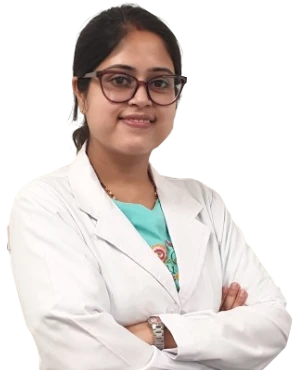Rheumatology is a sub-specialty of internal medicine and paediatrics. It is devoted to the diagnosis and therapy of rheumatic diseases. Rheumatologists deal mainly with clinical problems involving joints, soft tissues, autoimmune diseases, vasculitis, and heritable connective tissue disorders.
Many of these diseases are now known to be autoimmune disorders. When you have an autoimmune disorder, your immune system does not distinguish between healthy tissue and antigens (bacteria or virus invading the body). As a result, the body sets off a reaction that destroys normal tissues. There are more than 80 types of autoimmune disorders.
Diseases treated by rheumatologists include:
- Rheumatoid arthritis
- Spondyloarthropathies
- Systemic lupus erythematous
- Scleroderma
- Vacuities
Disorders of the Immune System
- Immunodeficiency
- Too little
- Hypersensitivity
- Too much
- Autoimmunity
- Misdirected
Joint Diseases Diagnosed or Managed by the Rheumatologist Include:
Inflammatory Arthropathies
- Rheumatoid arthritis
- Spondyloarthropathies
- Ankylosing spondylitis
- Reactive arthritis
- Psoriatic arthropathy
- Enteropathic arthropathy
- Juvenile idiopathic arthritis (JIA)
Degenerative Arthropathies
- Osteoarthritis
Crystal Arthropathies
- Gout
- Pseudogout
Septic Arthritis
Soft Tissue Rheumatism and Others
- Low back pain
- Tennis elbow
- Golfer’s elbow
- Olecranon bursitis
Rheumatoid Arthritis (RA) is a long-lasting systemic autoimmune disorder that primarily affects the joints. It results in warm, swollen, and painful joints. Pain and stiffness often worsen following rest. This may result in a low red blood cell count and inflammation around the lungs and heart.
Onset is most frequent during middle age and women are affected 2.5 times as frequently as men. The goal of treatment is to reduce pain, decrease inflammation, and improve a person’s overall functioning. A group of medications called disease-modifying anti-rheumatic drugs (DMARDs) is used to try to slow the progression of the disease. Surgery to repair, replace, or fusion joints may help in certain situations.
SpA-Spondyloarthropathy
‘Spondyloarthropathy’ is a term that is associated with a specific group of disorders. It differs from spondylopathy, which is a disease of the vertebra itself. Lower back pain is the most common symptom. The pain decreases with activity. nkylosing Spondylitis (AS), psoriatic arthritis (PsA), reactive arthritis, enteropathic arthritis are in the same spectrum. NSAIDS form the first line of therapy. Biologics called anti-TNF work very well in such a condition.
Systemic Lupus Erythematosus (SLE or lupus) is a systemic autoimmune disease in which the body’s immune system mistakenly attacks healthy tissue. SLE most often harms the heart, joints, skin, lungs, blood vessels, liver, kidneys, and nervous system. The course of the disease is unpredictable, with periods of illness (called flare-ups) alternating with remissions. The disease is nine times more often in women than in men, especially in women of child-bearing years (ages 15 to 35). SLE can be fatal. There is no cure for SLE. The symptoms can be controlled with immunosuppressants.
Systemic conditions and connective tissue diseases
- Lupus
- Sjögren’s syndrome
- Scleroderma (systemic sclerosis)
- Polymyositis
- Dermatomyositis
- Polymyalgia rheumatica
- Mixed connective tissue disease
- Relapsing polychondritis
- Adult-onset Still’s disease
- Sarcoidosis
- Fibromyalgia
- Vasculitis
- Microscopic polyangiitis
- Eosinophilic granulomatosis with polyangiitis (Churg–Strauss syndrome)
- Granulomatosis with polyangiitis (Wegener’s Granulomatosis)
- Polyarteritis Nodosa
- Henoch-Schönlein purpura (HSP)
- Serum sickness
- Giant cell arteritis, temporal arteritis
- Takayasu’s arteritis
- Behçet’s Syndrome
- Kawasaki’s disease (mucocutaneous lymph node syndrome)
- Buerger’s disease (thromboangiitis obliterans)
- Hereditary periodic fever syndromes
Vasculitis is a group of disorders that destroy blood vessels by inflammation. It could be organ or life threatening if it is not treated promptly.
Symptoms include:
Fever, weight loss, skin rash, muscle inflammation, arthritis, headache, tinnitus, visual loss, myocardial infarction, hypertension, gangrene, nose bleeds, bloody cough, abdominal pain, bloody stool, and glomerulonephritis.
Facilities Available
Large vessel vasculitis (LVV)
- Takayasu arteritis (TAK)
- Giant cell arteritis (GCA)
Medium Vessel Vasculitis (MVV)
- Polyarteritis nodosa (PAN)
- Kawasaki disease (KD)
Small Vessel Vasculitis (SVV)
- Antineutrophil cytoplasmic antibody (ANCA)–associated vasculitis(AAV)
- Microscopic polyangiitis (MPA)
- Granulomatosis with polyangiitis (Wegener’s) (GPA)
- Eosinophilic granulomatosis with polyangiitis (Churg-Strauss)(EGPA)
Immune complex SVV
- Anti–glomerular basement membrane (anti-GBM) disease
- Cryoglobulinemic vasculitis (CV)
- IgA vasculitis (Henoch–Schönlein)(IgAV)
- Hypocomplementemic urticarial vasculitis (HUV) (anti-C1q vasculitis)
Scleroderma is an autoimmune rheumatic disease that affects the skin and other organs of the body. The main problem is thickening and tightening of the skin and inflammation and scarring of internal organs, leading to problems in the lungs, kidneys, heart, intestinal system, and other areas. There is still no cure but effective treatments for some symptoms of the disease are available.
The two main types of scleroderma are:
Localized Scleroderma – Usually affects only the skin but can also affect muscles, joints, and bones. Manifests as discoloured patches on the skin or streaks or bands of thick, hard skin on the arms and legs.
Systemic Scleroderma – The most serious form of the disease, affects the skin, muscles, joints, blood vessels, lungs, kidneys, heart, and other organs.
Raynaud’s Phenomenon – It is an extremely common problem in Scleroderma and is generally symptomised by colour changes (blue, white, and red) in fingers (and sometimes toes) usually after exposure to cold temperatures, enlarged red blood vessels on the hands, face and around nail beds and calcium deposits. This causes difficulties in swallowing food, bloating and constipation, or problems absorbing food leading to weight loss, shortness of breath, joint pain, and contractures
Disease-Modifying Anti-Rheumatic Drugs (DMARDs) act by altering the underlying disease rather than treating symptoms. They are not painkillers but they will reduce pain, swelling, and stiffness over a period of weeks or months by slowing down the disease and its effects on the joints.
These are usually of two types:
Conventional DMARDs – Slow-acting drugs that can take several weeks to work.
Biological Therapies or Biologics – are newer drugs that target individual molecules and tend to work more quickly. Biological therapies are usually given to people who have not responded to conventional DMARDs or who have had side-effects from them. Biological therapies are often given in combination with a conventional DMARD and evidence suggests earlier use might lead to better disease control and limit the damage.
Love Your Bones and Protect Your Future
Osteoporosis is a disease in which decreased bone strength increases the risk of a broken bone. It is the most common reason for a broken bone among the elderly. Bones that commonly break include the backbones, the bones of the forearm, and of the hips. Bones may weaken to such a degree that a break may occur with minor stress or even spontaneously. It is more common in women than in men. Osteoporosis can also cause silent fractures in your backbones. People with risk factors, low body mass, or history of low trauma fracture should have DEXA scan done and bone health checked. As a preventive measure, it is very important to stop smoking, decrease alcohol intake, exercise at least five days in a week, and maintain adequate calcium and vitamin D intake.





